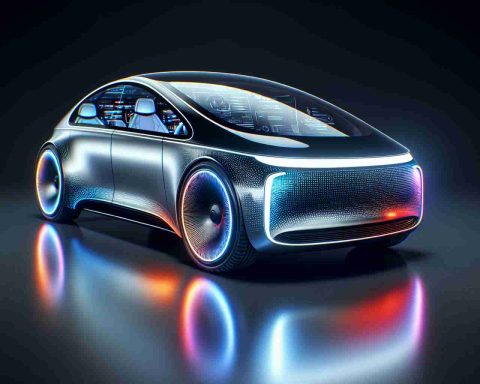Strong Finish for Automakers in 2024
As the automotive industry wrapped up 2024, a significant upswing in sales was noted, particularly in the electric vehicle segment. General Motors emerged as the standout performer, boasting a remarkable 21 percent increase in sales during the last quarter, translating to over 755,000 vehicles sold. A striking highlight was GM’s electric vehicle sales, which more than doubled, reaching nearly 44,000 units, solidifying its position as the second-largest seller of EVs in the U.S. after Tesla.
Ford Motor Company also enjoyed a healthy quarter, with sales exceeding 530,000 vehicles, marking an impressive 9 percent rise. The company’s electric vehicle sales also grew, climbing 16 percent to over 30,000. Meanwhile, Honda and Hyundai both reported sales increases of 9 and 10 percent, respectively. Nissan also saw a 10 percent boost in its sales figures for the quarter.
Contrasting these gains, Toyota faced challenges, experiencing a 3 percent drop in quarterly sales. Stellantis, known for its Jeep, Chrysler, and Ram brands, saw a more significant 7 percent decline in its sales numbers.
Looking ahead, Cox Automotive anticipates a 2.8 percent growth in auto sales for the current year, projecting a total of 16.3 million vehicles sold, fueled by positive economic indicators and consumer enthusiasm.
Electric Vehicles Drive Automotive Market Growth in 2024
Overview of the Automotive Industry in 2024
The automotive industry experienced a robust finish in 2024, particularly highlighted by a surge in electric vehicle (EV) sales. Major manufacturers reported significant increases in overall sales figures, indicating a promising trend towards a more electrified future. As consumers increasingly seek sustainable transport options, the market is evolving rapidly, showcasing both competition and innovation.
Key Performers
General Motors (GM) emerged as a frontrunner with a remarkable 21% increase in sales during the last quarter, surpassing 755,000 vehicles sold. GM’s electric vehicle sales outperformed expectations, more than doubling to nearly 44,000 units, confirming its status as the second-largest EV seller in the U.S. after Tesla.
Ford Motor Company also marked a commendable quarter with sales exceeding 530,000 vehicles, translating to a 9% rise. The company’s EV segment showed growth as well, with sales up 16% to over 30,000 units.
In contrast, Honda and Hyundai recorded a 9% and 10% increase in sales, respectively, while Nissan enjoyed a matching 10% boost. These gains reflect the industry’s overall upward trajectory, influenced by increasing consumer acceptance and regulatory support for electric vehicles.
Market Challenges
Despite the overall positive performance, Toyota experienced a 3% decline in quarterly sales. Similarly, Stellantis, recognized for brands like Jeep and Ram, reported a substantial 7% drop in sales. These setbacks underline the competitive challenges faced by established automakers amid the industry’s shifting dynamics.
Future Projections and Trends
Looking to the future, Cox Automotive predicts a continued upward trend in the automotive market, forecasting a 2.8% growth in sales for 2025, which would amount to around 16.3 million vehicles sold. This projection is driven by favorable economic conditions and maintained consumer enthusiasm for new vehicle offerings, particularly in the electric segment.
Innovations and Technologies
1. Battery Technology Advances: Automakers are investing heavily in next-generation battery technologies to enhance the range and efficiency of electric vehicles. Innovations in solid-state batteries and fast-charging capabilities are expected to transform the EV market further.
2. Autonomous Driving Features: The industry is also focusing on integrating autonomous driving technologies into the latest models, providing consumers with enhanced safety features and improved driving experiences.
3. Sustainability Initiatives: Manufacturers are increasingly adopting sustainable practices, such as utilizing recycled materials in vehicle production and implementing carbon-neutral manufacturing processes.
Pros and Cons of Electric Vehicles
Pros:
– Reduced environmental impact due to lower emissions.
– Lower operating costs compared to traditional fuel vehicles.
– Government incentives and tax credits available for EV purchases.
Cons:
– Higher upfront costs, although prices are decreasing.
– Limited charging infrastructure in some areas can pose a challenge.
– Range anxiety due to varying EV battery capacities.
Conclusion
The automotive landscape in 2024 showcases a dynamic shift towards electric vehicles, with established players and new entrants driving innovation and competition. As the industry adapts to changing consumer preferences and environmental considerations, we can expect continued growth, technological advancements, and an expansion of sustainable practices. For more insights on the automotive market, visit Auto Industry News.













